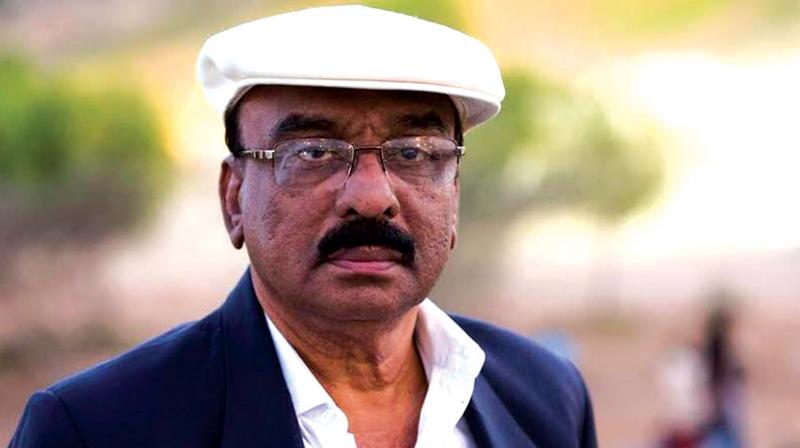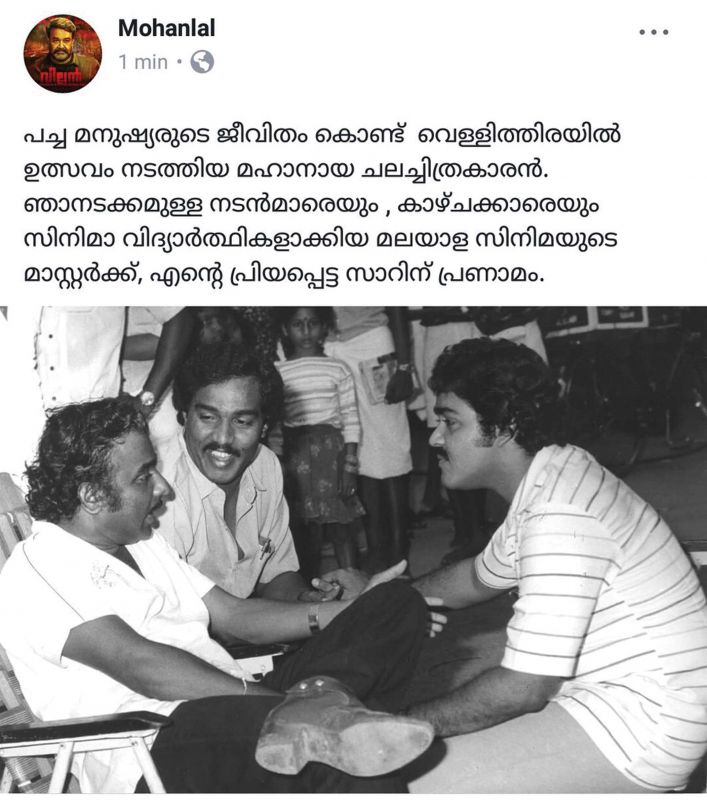Greatest crowd pleaser
Cinema was more than a creative expression for I.V. Sasi. It was his only means of survival and he held on to it with his dear life.

THIRUVANANTHAPURAM: For I.V. Sasi, filmmaking was not a passion. It was for him a life-saving mechanism, some sort of a ventilator support. He felt alive only when he was making films. At his peak, which was all through the 80s and most of the 90s, it was easy for him to remain plugged in. He did an average five to six films during this time. In the late 70s and 80s, there were years when he made more than 10 films; he holds the world record for making the most number of films a year (13 in 1977). But even when the decline started, he struggled hard not to be taken off support. There is a general feeling that 69 is too young an age for a man to die. But those close to I.V. Sasi are surprised that he reached nearly 70. “He just couldn’t exist without cinema, and he knew nothing else beyond cinema. I always wondered how he survived without making films,” said writer John Paul, who had collaborated with him in many blockbusters including Athirathram (1984), and also its botched-up sequel Balram vs Tharadas (2006). The only time Sasi felt free of confusion or complex was when he was making films.
“I have never known him think or speak about anything else other than cinema,” said cinematographer Ramachandra Babu who cranked the camera for the cult classic Itha Ivide Vare (1977) and many more. “He will be the last to leave the set and the first one to arrive. Many a time I had the creeping sensation that this man did not like to stop shooting as he would extend a day’s shoot to even four he next morning. And then, causing deep resentment in the rest of the crew, he would ask us to reassemble at 5.30 a.m.,” Ramachandra Babu said. And during shoots, he is what John Paul calls ‘hyperactive’. “Honestly, I don’t remember Sasiettan sitting during a shoot. He flitted about pushing the crew to work faster as if he had been warned that some natural calamity would hit the sets any time soon," said actor Raveendran who was introduced into Malayalam cinema by Sasi through Ashwaradhan (1980). “Sasi had superhuman energy,” is how John Paul puts it. Filmmaker M. Padmakumar, who had assisted Sasi in nearly 20 films, said that his mentor worked at a breakneck speed. “He was always in a state of exhilaration, and will not allow you to waste a single moment,” he said.
RAJNI ROBS SASI OF RECORD
And whenever his process was stalled, Sasi had come up with unorthodox ways to keep things moving. In 1977, during the making of the bilingual Allauddinum Albhutha Vilakkum starring Kamal Hassan and Rajnikanth, Sasi’s patience was tested to the limits by Rajnikant’s wild behaviour. “Rajni was always under the influence of liquor and could turn violent any moment. Even Kamal was wary of doing fight sequences with Rajni,” said Ramachandra Babu, the cinematographer of the film.
When things got worse, Rajni had to be admitted to a hospital and the shooting postponed. It was from his hospital bed that Rajni came to shoot the climax. But Sasi hit upon a scheme to prevent Rajni from throwing any more tantrums. He convinced K. Balachander (Kamal’s and Ranji’s mentor) to be on the sets when Rajni was acting. Rajni behaved. But the delay cost Sasi a record. Thacholi Ambu, which released late in 1978, became South India’s first film made in cinemascope. Had the shooting proceeded according to schedule, Allauddinum Albhutha Vilakkum would have easily taken that honour.

SASI ORDERS LATHI CHARGE
Sasi can be quite ruthless, too, to get his way. In 1990, during the shoot of 'Inspector Balram', he had to can a police lathi charge along a man thoroughfare in Thalassery. Some junior artists, some dressed up as policemen and others as agitators, were bussed in for the shoot. But knowing that Mammootty would arrive soon, an unmanageable crowd had gathered at the venue. There was no way the shoot could be carried out. Sasi promptly called the police in, and when they arrived, made a seemingly benign request: "Please remove the crowd so that we could resume our shoot." No amount of persuasion worked and the policemen charged. The wily Sasi had by then parked three cameras at vantage positions on top of nearby buildings. The policemen infiltrated the crowd with their batons and started pushing the crowd back. J Williams and his team just had to keep the cameras rolling.
After the crowd was forcibly dispersed, the slippers and bags of those who had been beaten and pushed back were strewn all around. And there was dust all around. Many filmmakers consider this scene to be the gold standard for 'lathi charge' sequences. "Where Sasi erred was in not anticipating his fall. This had pushed him into depression in his later years," John Paul said. I V Sasi did not figure out that emperors, too, had a shelf life. From a time when at least five production cars will be waiting for him at the airport, there came a period when even the calling bell of his house in Chennai, if at all it rang, sounded only to ask about his wife Seema.
